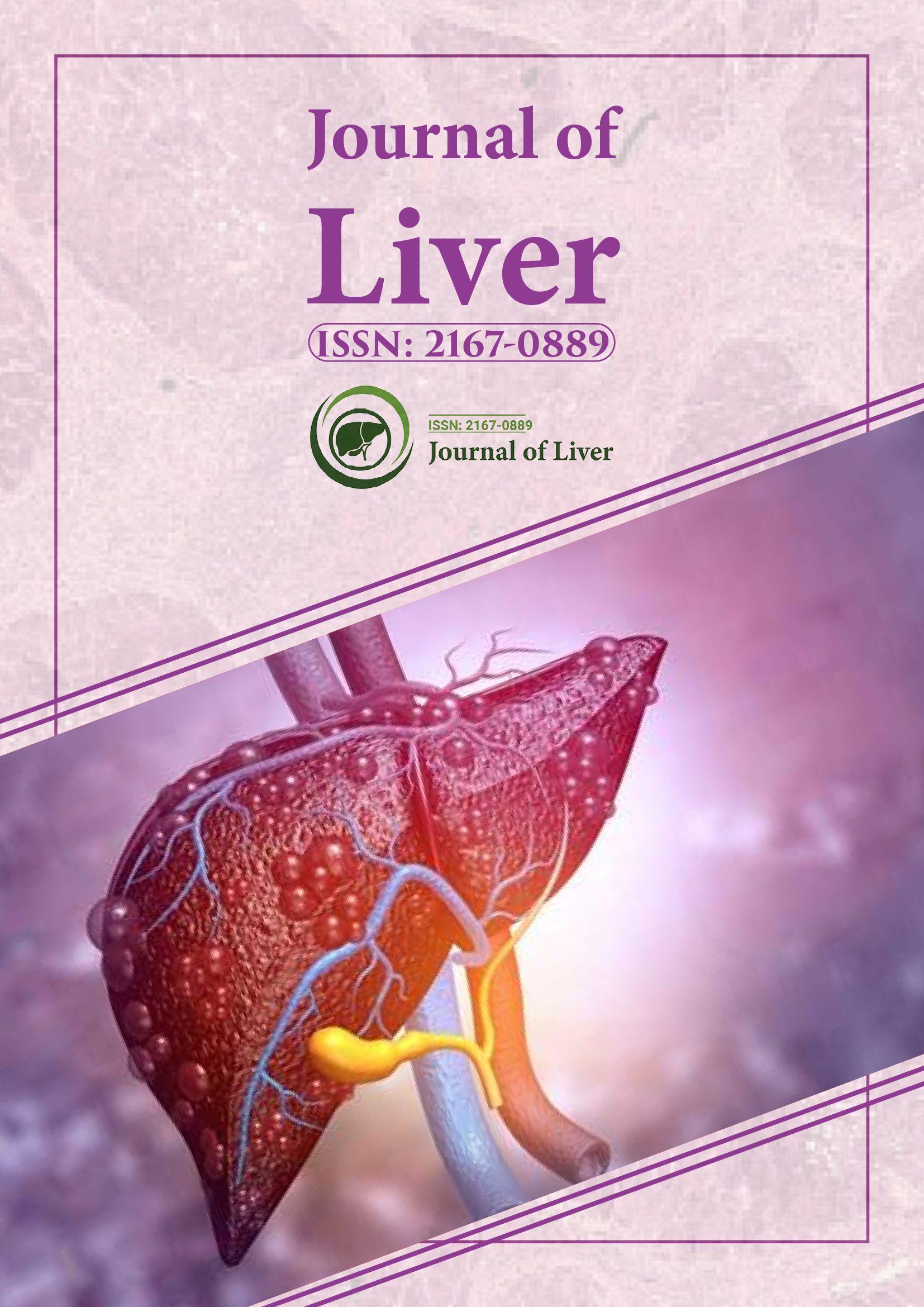Indexed In
- Open J Gate
- Genamics JournalSeek
- Academic Keys
- RefSeek
- Hamdard University
- EBSCO A-Z
- OCLC- WorldCat
- Publons
- Geneva Foundation for Medical Education and Research
- Google Scholar
Useful Links
Share This Page
Journal Flyer

Open Access Journals
- Agri and Aquaculture
- Biochemistry
- Bioinformatics & Systems Biology
- Business & Management
- Chemistry
- Clinical Sciences
- Engineering
- Food & Nutrition
- General Science
- Genetics & Molecular Biology
- Immunology & Microbiology
- Medical Sciences
- Neuroscience & Psychology
- Nursing & Health Care
- Pharmaceutical Sciences
Opinion - (2025) Volume 14, Issue 1
Non-Surgical Methods in the Treatment of Hepatic Encephalopathy
Elba Bruix*Received: 25-Feb-2025, Manuscript No. JLR-25-29110; Editor assigned: 27-Feb-2025, Pre QC No. JLR-25-29110 (PQ); Reviewed: 13-Mar-2025, QC No. JLR-25-29110; Revised: 20-Mar-2025, Manuscript No. JLR-25-29110 (R); Published: 27-Mar-2025, DOI: 10.35248/2167-0889.25.14.250
Description
Hepatic Encephalopathy (HE) is a neuropsychiatric complication arising from liver dysfunction, commonly observed in individuals with cirrhosis or portosystemic shunting. It encompasses a wide range of cognitive and motor disturbances, from mild disorientation to deep coma. While the condition is primarily managed with medical therapy, a subset of patients exhibits poor response or frequent recurrences despite optimal treatment. In these cases, Interventional Radiology (IR) plays a vital role by addressing the anatomical and hemodynamic contributors to HE.
IR techniques are increasingly being employed for both diagnostic and therapeutic purposes in hepatic encephalopathy. These procedures can help modify abnormal blood flow patterns, improve hepatic perfusion and reduce systemic exposure to neurotoxins. This article reviews the pathophysiology of HE, medical limitations and current interventional strategies that contribute to managing this condition effectively.
Hepatic encephalopathy
HE results from the accumulation of neurotoxic substances, particularly ammonia, that bypass liver metabolism and enter the systemic circulation. These toxins alter neurotransmission and brain energy metabolism, leading to the neurological manifestations of HE.
Role of interventional radiology
IR procedures aim to correct hemodynamic abnormalities that exacerbate HE. These include closure of spontaneous portosystemic shunts, modulation of blood flow through TIPS and other minimally invasive interventions. The major strategies employed are described below.
Closure of Spontaneous Portosystemic Shunts (SPSS)
SPSS are collateral vessels that form in response to portal hypertension, allowing blood to bypass the liver. Common sites include the splenorenal, gastrorenal and mesenteric-iliac veins. While these shunts reduce portal pressure, they permit toxins to enter systemic circulation, contributing to HE.
Percutaneous embolization of mesenteric collaterals
In patients with diffuse or multiple portosystemic shunts, mesenteric veins can serve as major contributors to HE. Targeted embolization via percutaneous transhepatic or transjugular access can be employed when feasible.
Technique: Under ultrasound and fluoroscopic guidance, interventionalists introduce embolic materials to block abnormal venous flow. Pre-procedure planning includes cross-sectional imaging and sometimes diagnostic angiography.
Outcome Monitoring: Clinical response is typically measured by improvement in HE symptoms, reduction in ammonia levels and fewer hospital visits.
Outcomes and evidence
Several retrospective and prospective studies have supported the use of interventional procedures for HE management. Embolization of SPSS has been associated with significant symptomatic relief, with studies reporting improvement in over 60%-80% of cases. TIPS modification also shows efficacy, though with a slightly higher rate of complications related to worsening portal hypertension.
BRTO has been widely used in East Asian countries with encouraging outcomes and is gaining acceptance elsewhere. In all these approaches, patient selection remains essential to achieve the best results while minimizing adverse effects.
Interventional radiology has emerged as an essential component in the management of hepatic encephalopathy, particularly in cases that do not respond adequately to medical therapy. Procedures such as shunt embolization, TIPS modification, BRTO and collateral vein occlusion offer valuable options to address the underlying hemodynamic contributors to HE. Careful patient selection, procedural expertise and integrated post-intervention care are essential for favorable outcomes. Continued innovation and collaboration will further support the role of IR in managing complex liver-related complications.
Citation: Bruix E (2025). Non-Surgical Methods in the Treatment of Hepatic Encephalopathy. J Liver. 14:250.
Copyright: © 2025 Bruix E. This is an open-access article distributed under the terms of the Creative Commons Attribution License, which permits unrestricted use, distribution, and reproduction in any medium, provided the original author and source are credited.
